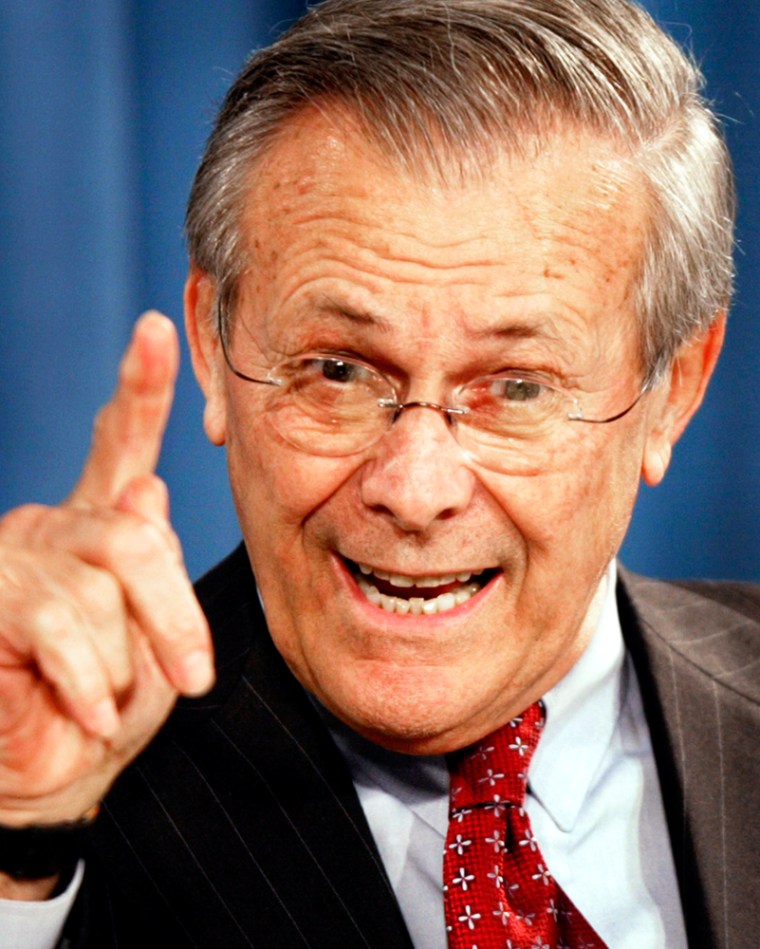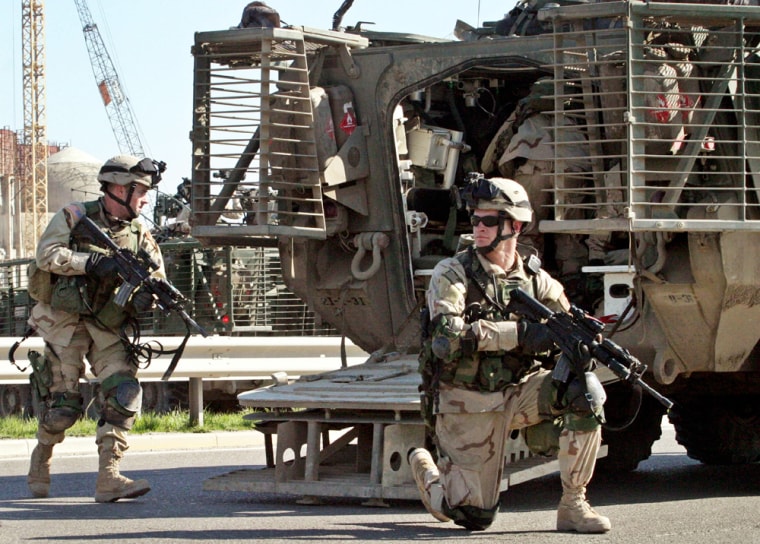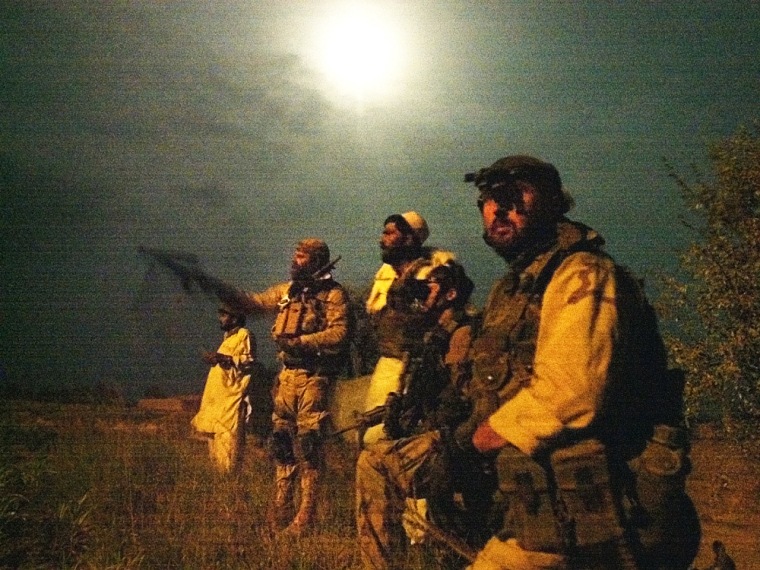Two years before American troops invaded Iraq, Defense Secretary Donald Rumsfeld declared a personal war against the U.S. military's Cold War mentality and Pentagon bureaucracy. Rumsfeld put forward a vision for a top-to-bottom transformation in the way the military fights and how the Pentagon conducts its business.
The war on terrorism, most recently in the conflicts in Afghanistan and Iraq, has bolstered Rumsfeld’s argument that the U.S. military needs to reform while demonstrating how that goal can be accomplished.
In Afghanistan, small numbers of U.S. Special Forces joined arms with the private armies of Afghan warlords to swiftly defeat the Taliban and destroy the sanctuaries of the al-Qaida terrorist organization.
American soldiers on horseback, using the latest in high-tech global positioning and communications to call in devastating air strikes with precision-guided bombs against enemy positions successfully demonstrated Rumsfeld's dream of a quick, agile, adaptive military force needed to counter the asymmetrical threats and meet the new security challenges of the 21st century.

"It shows that a revolution is about more than building new high-tech weapons," Rumsfeld said. "It's also about new ways of thinking and new ways of fighting."
It also convinced Rumsfeld how the U.S. military should fight the war in Iraq.
JOINTNESS
Despite the original invasion plans from Central Command's General Tommy Franks that would have mobilized 250,000 American ground troops for the invasion of Iraq, Rumsfeld and his advisers argued privately that the Iraqi military could be easily defeated with far fewer forces - about 70,000 -- and sent Franks back to the drawing board.
Ultimately, approximately 125,000 U.S. Army combat soldiers and Marines were all that was needed on the ground to defeat a badly disorganized and demoralized Iraqi army and to seize Baghdad.
Although providing security in the aftermath of major conflict has proven far more daunting than anticipated, the success of the initial invasion provided Rumsfeld with even more ammunition in his campaign for transformation.
In a major step toward that goal, the war in Iraq saw more integration between the separate branches of the U.S. military than in any conflict in modern history.
In military speak it's called, JOINTNESS, and it's at the core of Rumsfeld's plan for transformation, blurring the lines between Army, Air Force, Navy, and Marines, to create a far more integrated force for future military operations.

Rumsfeld's vision of a more high-tech, high-flying military was also reinforced in Iraq through the increased use of unmanned aerial vehicles, (UAVs), pilot-less aircraft that can linger over targets for hours without putting human pilots at risk.
Air Force Global Hawks and Predators, Army Shadows, and the Marine Corps' mini-drone, the Dragon Eye, all transmitted live video back to combat commanders, giving them a real-time bird's-eye view of the battlefield that loomed well beyond the horizon.
Deficiencies
The Iraq war also revealed glaring deficiencies in the U.S. military’s capabilities that play directly into Rumsfeld's plans for transformation.
As the military made the transition from an invasion army to an occupation force, it became obvious the Army was woefully short of military police to help preserve order until the U.S. could train and equip Iraqi security forces.
To overcome the shortage, Army Chief of Staff, General Peter Schoomaker disbanded entire artillery battalions and is retraining those soldiers to become military police.
Another major score for Rumsfeld was the Army's recent decision to kill the Comanche attack helicopter program after spending more than 20 years and $7 billion on the project.
Rumsfeld had earlier engaged in a bitter, public battle with former Army Chief of Staff, General Erik Shinseki over the future of the Crusader, a weighty, self-contained, self-loading, rolling artillery system.
The Crusader was considered a Cold War relic and simply too big to fit into Rumsfeld's tightly-packed plans for transforming the military into a more agile, quick-reaction force.
Other big weapons systems, such as the Air Force F-22 Raptor fighter-jet of the future are potentially in Rumsfeld's crosshairs.
Force lighter and more agile
Based in part on lessons learned in both Iraq and Afghanistan, the Army is going through a dramatic transformation into a lighter, more agile, but equally lethal force.
But in keeping with Rumsfeld's mantra that bigger is not necessarily better, the Army is planning to increase the number of its combat brigades from 33 to 48, without increasing the number of Army divisions beyond the current 10, or adding significant numbers of soldiers.
Called "units of action," the maneuver brigades would be smaller, but almost totally self-contained, creating a complete, battle-ready combat force in a small package. Each Army division would be augmented with aviation and maintenance brigades, and perhaps a Marine Expeditionary Unit. The intent is to make each individual brigade as self-sufficent as possible for rapid deployments.
But, as Rumsfeld sees it, there can be no transformation of the military without a major overhaul of the Pentagon itself.
"While our troops operate in a fast-paced world of high-tech weaponry and precision-guided munitions, the men and women who support them here at home still slog through red tape and regulations that are in some cases decades old. We must be as agile, flexible and adaptable as the forces we field in battle," Rumsfeld wrote in an op-ed piece for several newspapers last September.
Rumsfeld has openly complained that while 200,000 reserve forces have been called up to help fight the war on terrorism, there are 300,000 uniformed military doing staff and clerical work that could easily be done by civilian employees, perhaps private contractors, freeing up more troops for the battlefields of tomorrow.
Though recent conflicts have certainly bolstered Rumsfeld's case for military transformation he still faces potentially strong resistance from Pentagon bureaucracy and from Congress.
But, as Secretary of War, Rumsfeld has a strong argument that the terrorist attacks on Sept. 11 and the ongoing threats against U.S. national security now make that transformation more imperative than ever.
